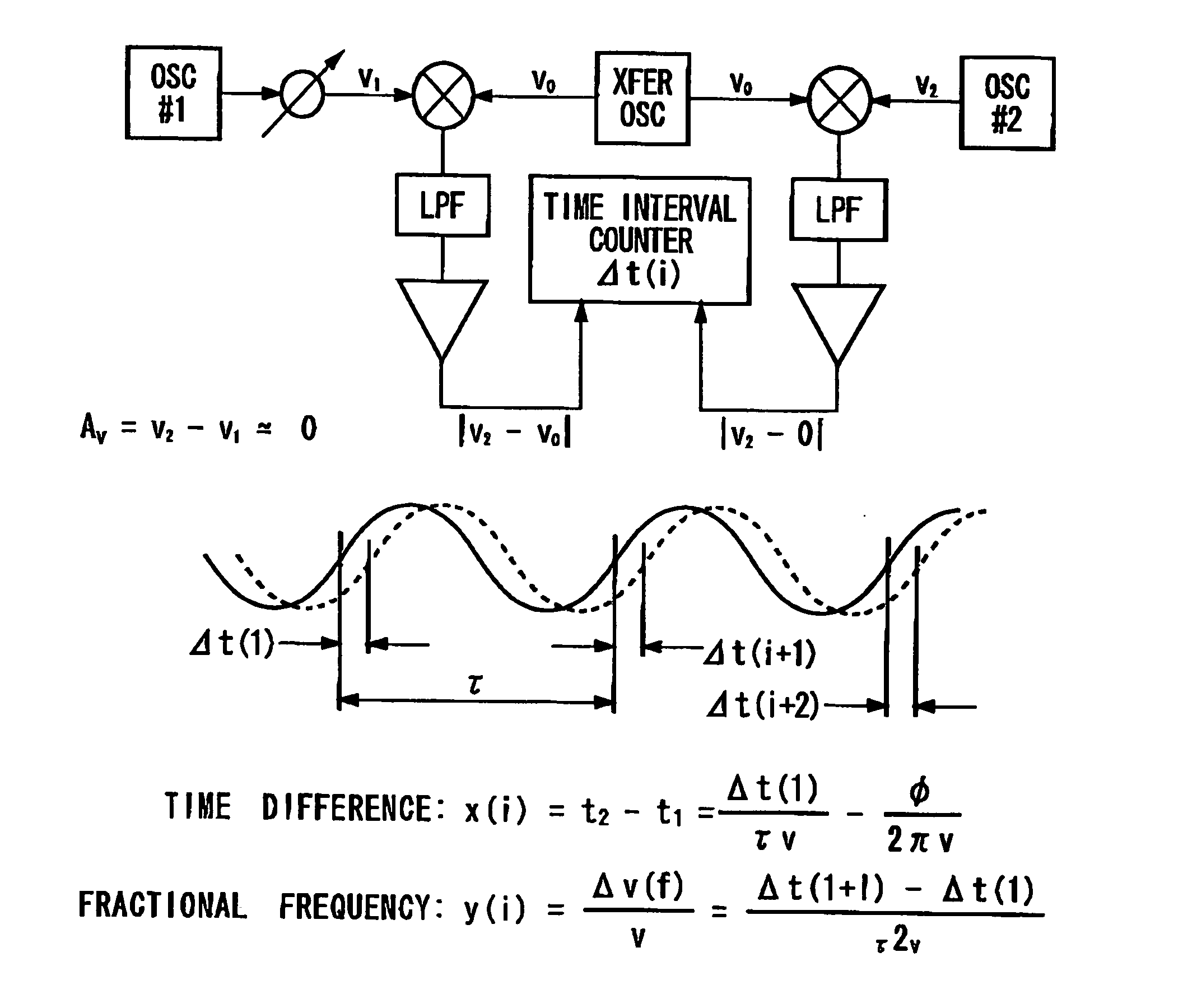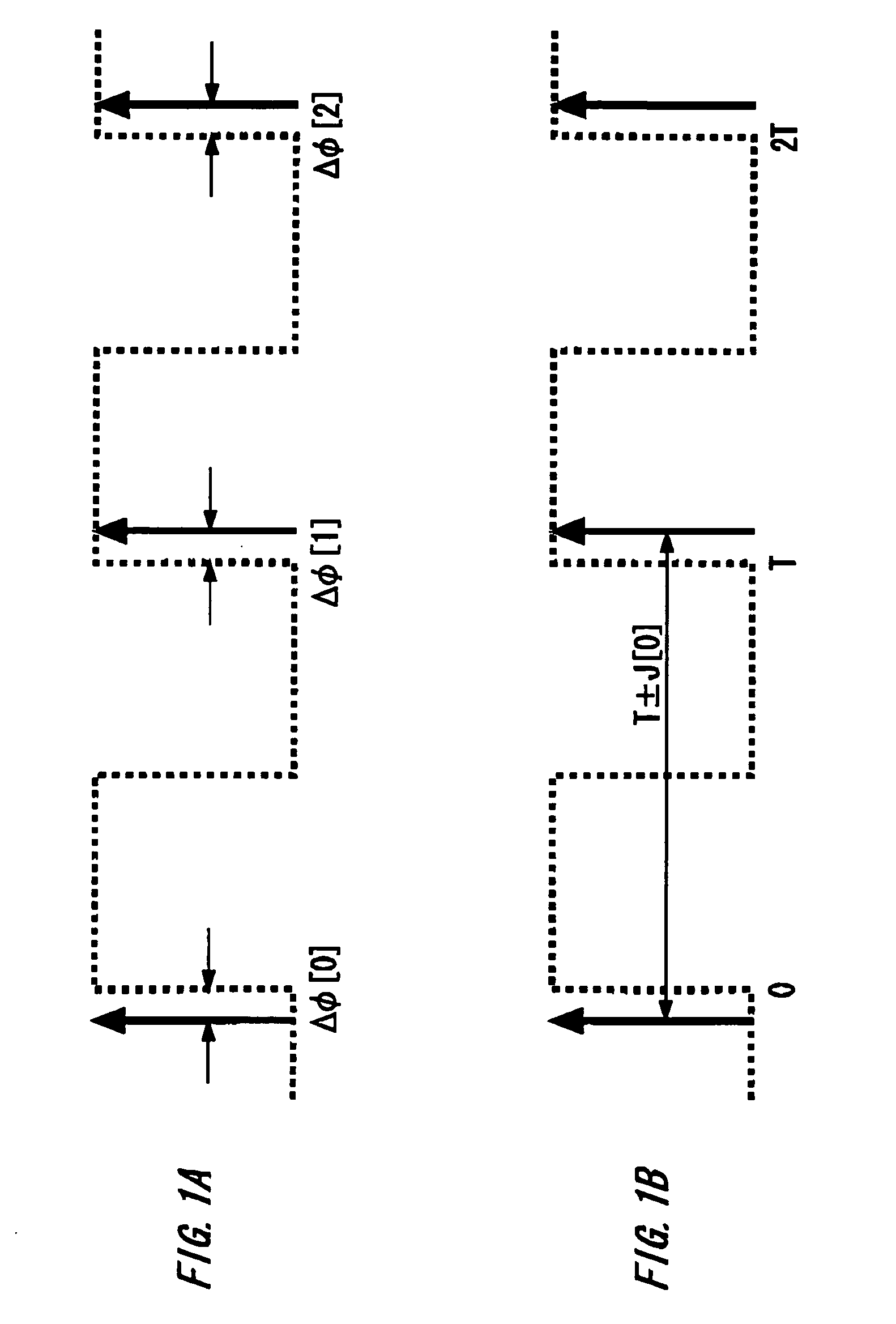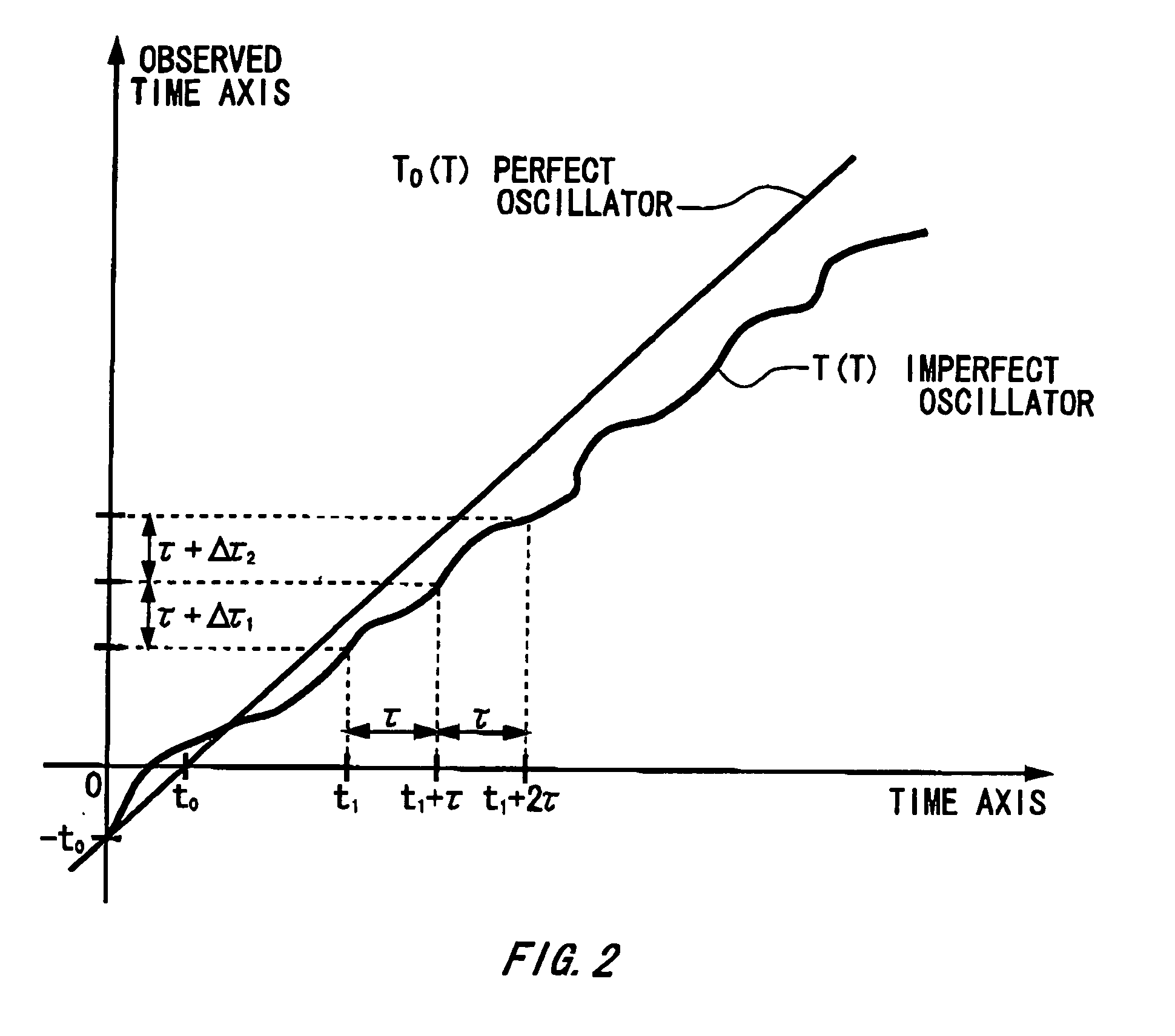Since it samples one by one in response to every trigger signal, however, the measurement time is too long and the time
scale error is large.
Moreover, the input channel of the equivalent sampling
oscilloscope has a wideband, so it is too sensitive to the effect of
noise, and therefore it cannot accurately measure small jitter.
However, such measuring method satisfying the requirement has not been invented yet.
Meanwhile, even for the manufacturers of measuring devices, it is also difficult to develop high performance hardware (particularly, an analog-to-
digital converter or a
frequency counter) in order to realize the next generation real time
oscilloscope or time interval analyzer.
That is, the development of the next generation measuring devices is accompanied by considerable risk, because it requires long term development or significantly high development costs.
In other words, it is obvious that the conventional measuring method has a limit.
However, when the timing jitter occurring due to the periodic cause and the timing jitter occurring due to the random cause is separated or when the
phase noise spectrum is measured, it is necessary to repeatedly measure the time interval and compute its autocorrelation function, and thus the measurement time becomes long.
Moreover, since the measurement is basically performed one by one, the long-term timing jitter (long term jitter) or the cycle-to-cycle period jitter JCC[n] cannot be measured.
In this method, there is a problem in principle (i.e. the problem of the measuring method associated with cyclostationary process) as described below.
However, if the jitter is small and the stationary process signal is not affected by the jitter, the jitter cannot be estimated accurately by the interpolation method.
However, since the zero-crossing is hardly sampled, the most time-consuming portion of the method for estimating period jitter is in detecting the zero-crossing point.
Therefore, if the value of the jitter to be measured is small, the measurement error in this method becomes large.
Accordingly, the small jitter cannot be measured accurately.
In addition, digitizing the waveform at accurate sampling timing requires making the sampling jitter small.
Thus, the higher the
data rate, the more the measurement is difficult.
Since the sampling period in the equivalent sampling method does not satisfy the sampling theorem, an
aliasing error cannot be avoided at the frequency of 20 kHz or more.
Consequently, the period jitter cannot be measured in the equivalent sampling method.
Inversely, since the time interval between the sampling values is not constant, the long term jitter cannot be measured neither in the equivalent sampling method.
Further, since one sample is sampled in response to a trigger signal, the measurement time is too long.
Therefore, it is difficult to realize the accuracy in the jitter measurement of a
CMOS circuit of which
noise energy is large.
Further, since one sample is sampled in response to the
START signal, the measurement time is too long.
Therefore, it is difficult to apply this apparatus to the test of high-volume manufactured.
That is, the higher the test rate, the more the
noise of the test
system affects.
However, in the
spectrum analyzer method, since frequency is swept using a filter, it takes time in measurement.
Moreover, since frequency sweep has to be performed on a filter, the
frequency resolution is coarse.
Accordingly, it is difficult to observe the spurious spectrum which occurs in the phase noise.
Moreover, the
spectrum analyzer method only measures the phase noise as the power spectrum.
Moreover, in the
spectrum analyzer method, the peak jitter of the phase noise cannot be measured.
Further, the spectrum analyzer method cannot directly measure the rms value or the peak-to-
peak value of the period jitter or its probability density function.
In addition, the faster the data-rate of the waveform-under-measurement, the more difficult it will be to digitize the waveform at accurate sampling timing without suffering from sampling jitter.
 Login to View More
Login to View More  Login to View More
Login to View More 


